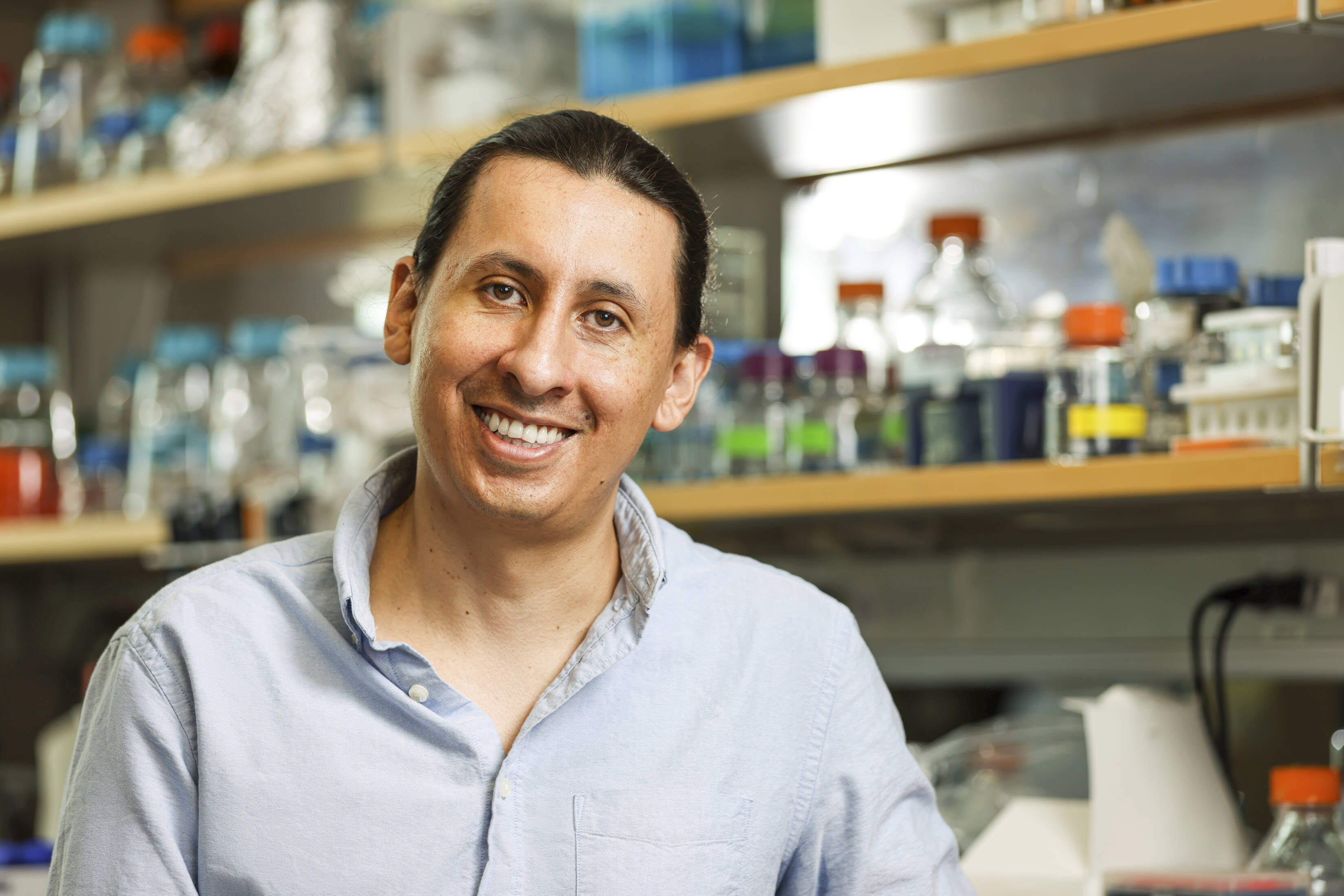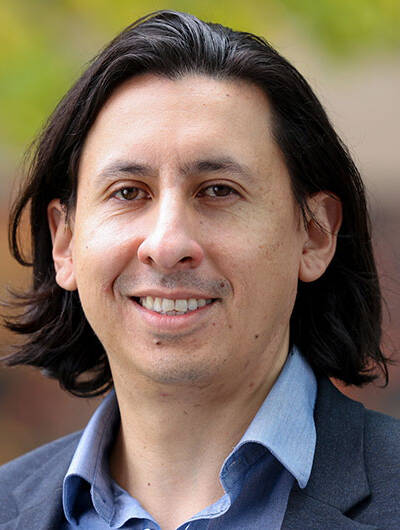New faculty member untangles the mysteries of RNA folding

Steve Bonilla Rosales (Kim Cook/Howard Hughes Medical Institute)
An essentially inert thread of genetic information, RNA reaches its potential upon folding into specific 3D structures. Only then can RNA catalyze biochemical reactions, aid in protein synthesis, and regulate the cell. Life as we know it therefore hinges not only on RNA, but on a given RNA strand adopting just the right shape to do its job.
But little is known of the intricate choreography behind RNA folding. Decoding that process could unlock treatments for neurological diseases that have been linked to RNA misfolding, such as ALS. It could also lead to novel drugs for short-circuiting replication of RNA viruses such as SARS-CoV-2. Untold discoveries may be unleashed once scientists unpack what makes one of life’s most fundamental molecules tick.
Steve L. Bonilla, the newest addition to The Rockefeller University faculty and one of the first scientists that used cryo-electron microscopy (cryo-EM) to capture small and dynamic RNA 3D structures, is a structural biologist who studies how RNA folds and how the structure of RNA helps viruses replicate. Bonilla will join Rockefeller on October 1, 2023 as a tenure-track assistant professor, and head of the Laboratory of RNA Structural Biology and Biophysics.
“We still have a cartoonish understanding of how viral RNA structures operate,” Bonilla says. “Among my lab’s goals will be understanding how they fold in 3D, whether such mechanisms are conserved across different viruses, and how we can develop a model to predict RNA structural dynamics and how these can be influenced with therapeutics.”
It was in graduate school that Bonilla first became enamored with RNA after hearing a lecture from Stanford’s resident RNA expert Daniel Herschlag. “I heard Dan talk about how little we knew about RNA structure, and there were so many questions and opportunities.” Bonilla joined Hershlag’s lab, where he started off working on fundamental questions within biophysics, such as the microscopic forces that help form and stabilize RNA’s 3D structure. In collaboration with William Greenleaf’s lab, he went on to use high-throughput biochemistry to characterize tens of thousands of sequences behind RNA motifs—the predictable bits of RNA that always form the same structure—for his PhD thesis.
“These motifs are ubiquitous, and they are the building blocks of larger structures,” Bonilla says. “If you understand how motifs behave, you can start predicting how larger assemblies work.”
Later, as a postdoc, Bonilla began exploring cryo-EM, an imaging technique that uses extremely cold temperatures and electron beams to take detailed pictures of tiny structures. There he managed to visualize intermediate stages of RNA folding and capture how certain viruses use their own RNA to mimic cellular tRNA of the host, thereby hijacking the host cell’s translation machinery. “We were among the first groups to try using cryo-EM to visualize small RNA 3D structures that had been too dynamic to be observed by other structural biology techniques,” he says.
Now, Bonilla plans to dive deeper into the question of how viruses use RNA 3D structures to hijack the cell and find common principles by studying the phenomenon in a variety of viruses—such as flaviviruses that infect humans, like dengue and Zika, as well as viruses that infect plants and bacteria.
The lab’s work on human viruses could bear fruit even in the short-term. “Once we understand how RNA 3D structures regulate viral replication, we can start thinking about disrupting these structures with antivirals,” he says. Such an antiviral could potentially prevent the viral RNA from adopting the shape needed to commandeer the cell in the first place.
In the long-term, Bonilla hopes to reveal fundamental principles of RNA folding that may lead to a predictive model that would allow researchers to look at an RNA sequence and calculate its 3D structure. That so many others now see the value in such an achievement is extremely gratifying for Bonilla, who was interested in RNA 3D structure and function long before the recent explosion in interest in RNA and RNA viruses that was fueled by COVID. “Many scientists used to think of RNA a single-stranded unstructured noodle,” he recalls. “It’s now apparent that RNA structure is fundamental to biology.”
Rockefeller University President Rick Lifton praised Bonilla’s creativity and hailed the incredible potential of his work in the burgeoning field of RNA structural dynamics. “Steve will be a great addition to our faculty and to the community at large,” Lifton says. “He focuses on the structure and dynamics of RNAs, a field that promises to advance our understanding of fundamental cellular and viral processes, and to spur the development of new therapeutics and biotech tools.”
Bonilla earned his BS in chemical engineering from the University of Washington and a PhD from Stanford University. He did his postdoctoral work with Jeffrey Kieft at the University of Colorado. In his spare time, Bonilla enjoys playing guitar, writing music, and occasional backpacking.



